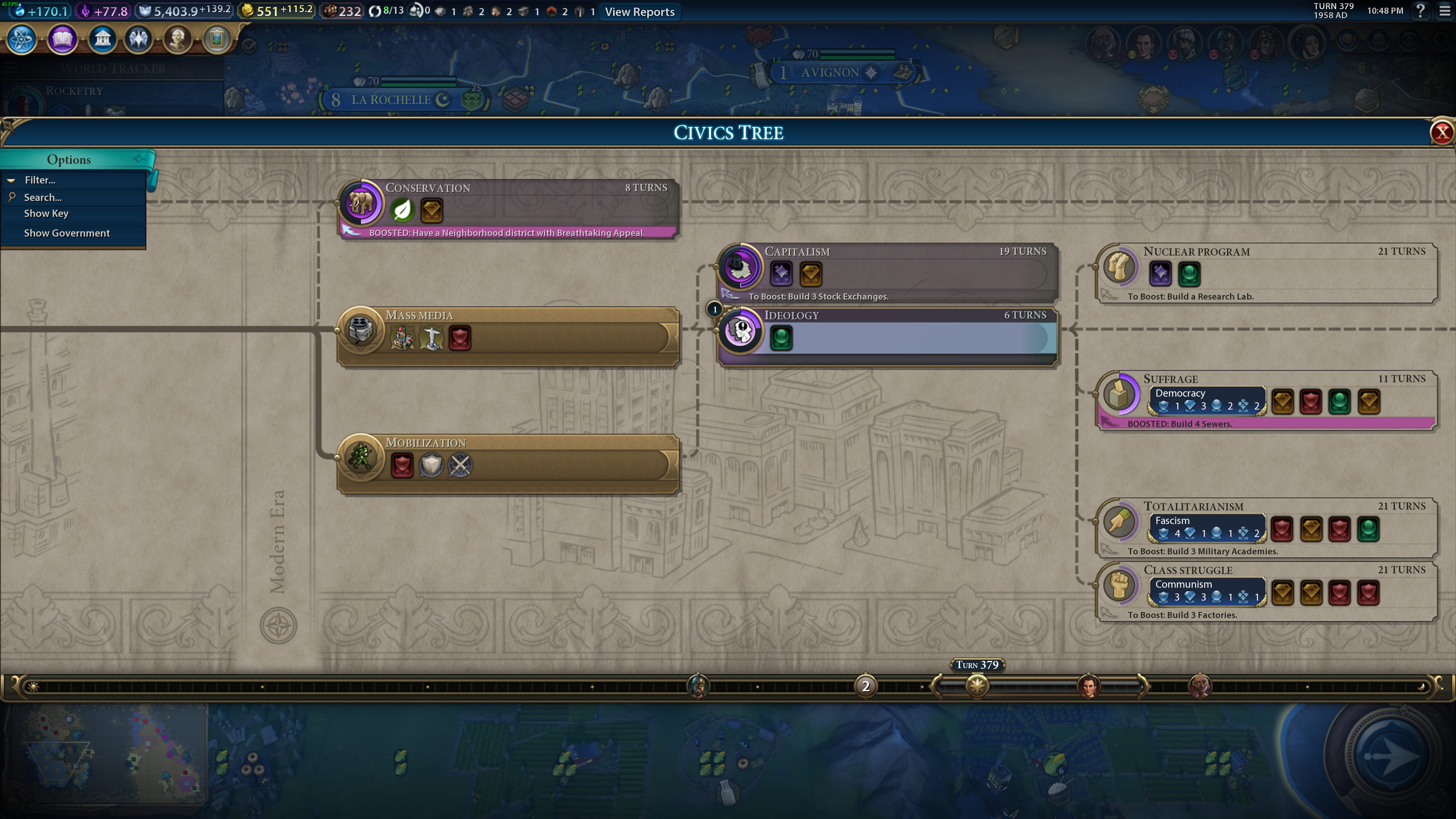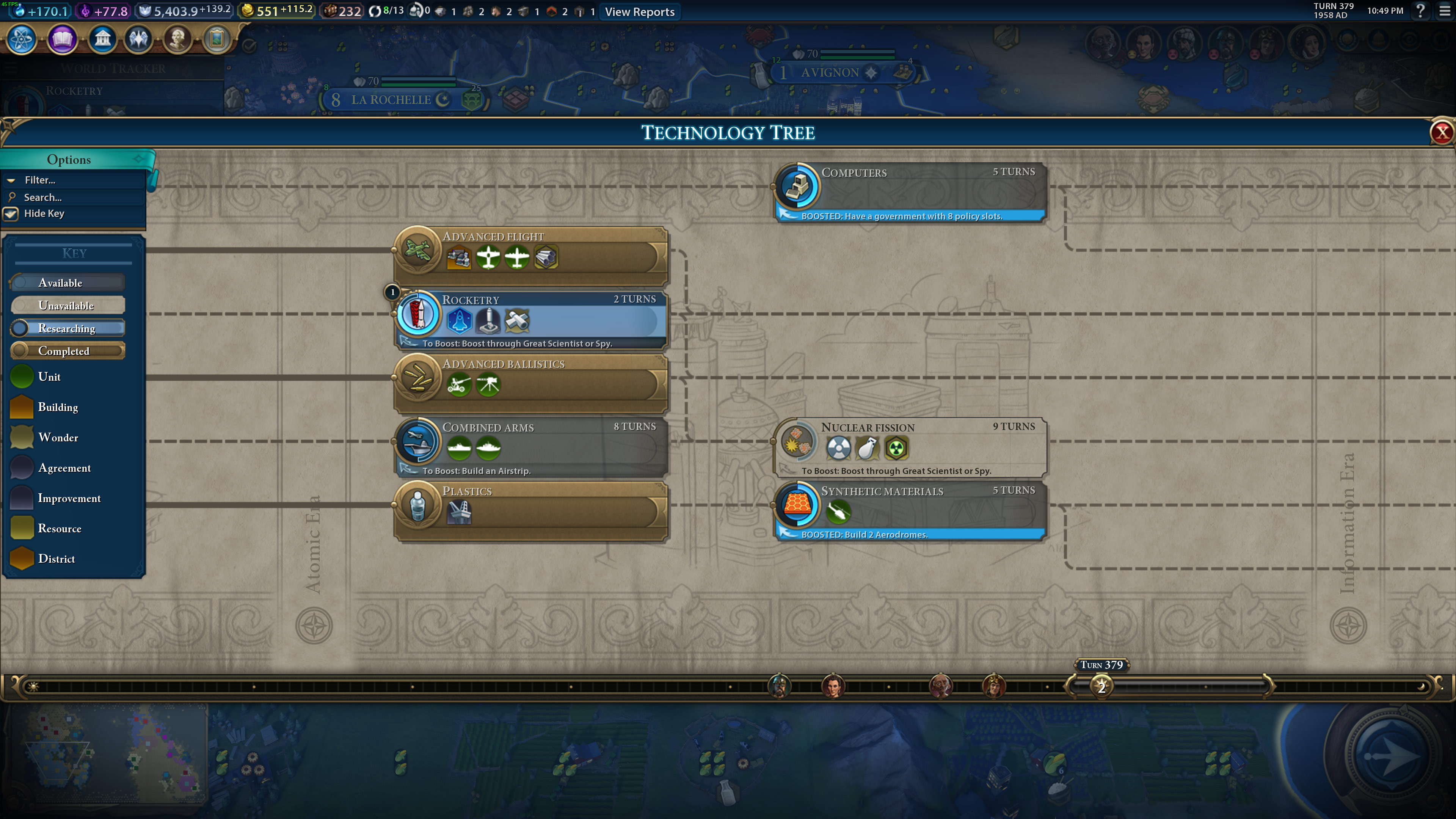Civilization VI - My First Campaign
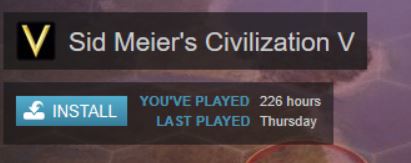 Although I've no idea where I rate on the grand scale of other players, I feel I'm a pretty big Civ V fan given the next-most-played game on my Steam list is Fallout 4 at 132 hours and MGSV at 103; half my Civ-time. Thus, when Civ VI was announced it was an instant pre-order. Six years is a long wait, and yes, I've ignored the heathen Beyond Earth as I'm strictly in it to win the human struggle!
Although I've no idea where I rate on the grand scale of other players, I feel I'm a pretty big Civ V fan given the next-most-played game on my Steam list is Fallout 4 at 132 hours and MGSV at 103; half my Civ-time. Thus, when Civ VI was announced it was an instant pre-order. Six years is a long wait, and yes, I've ignored the heathen Beyond Earth as I'm strictly in it to win the human struggle!
In the week post-release I'm up to 19 hours of my first playthrough. On firing it up for the first time I chose the 'play now' option and let the game decide everything based on default settings: normal (4) difficulty, with France, which sees Catherine de' Medici take over from the more recognizable Napoleon Bonaparte, playing on large continents.
The first thing you'll notice, below, is the total change in design and user interface. While unfamiliarity breeds anxiety, especially if you're a seasoned Civ V player, the core elements remain the same and the upgrade requires you put in the time to retrain your eyes. For me, this took the first ~4 hours (200 turns). The new stylizing is thorough and extremely well-presented, giving it the feeling of a 'living board-game' instead. While arguably more 'cartoony' than previously, it should not imply that the gameplay has turned at all childish: it's still the Civ we know and love.
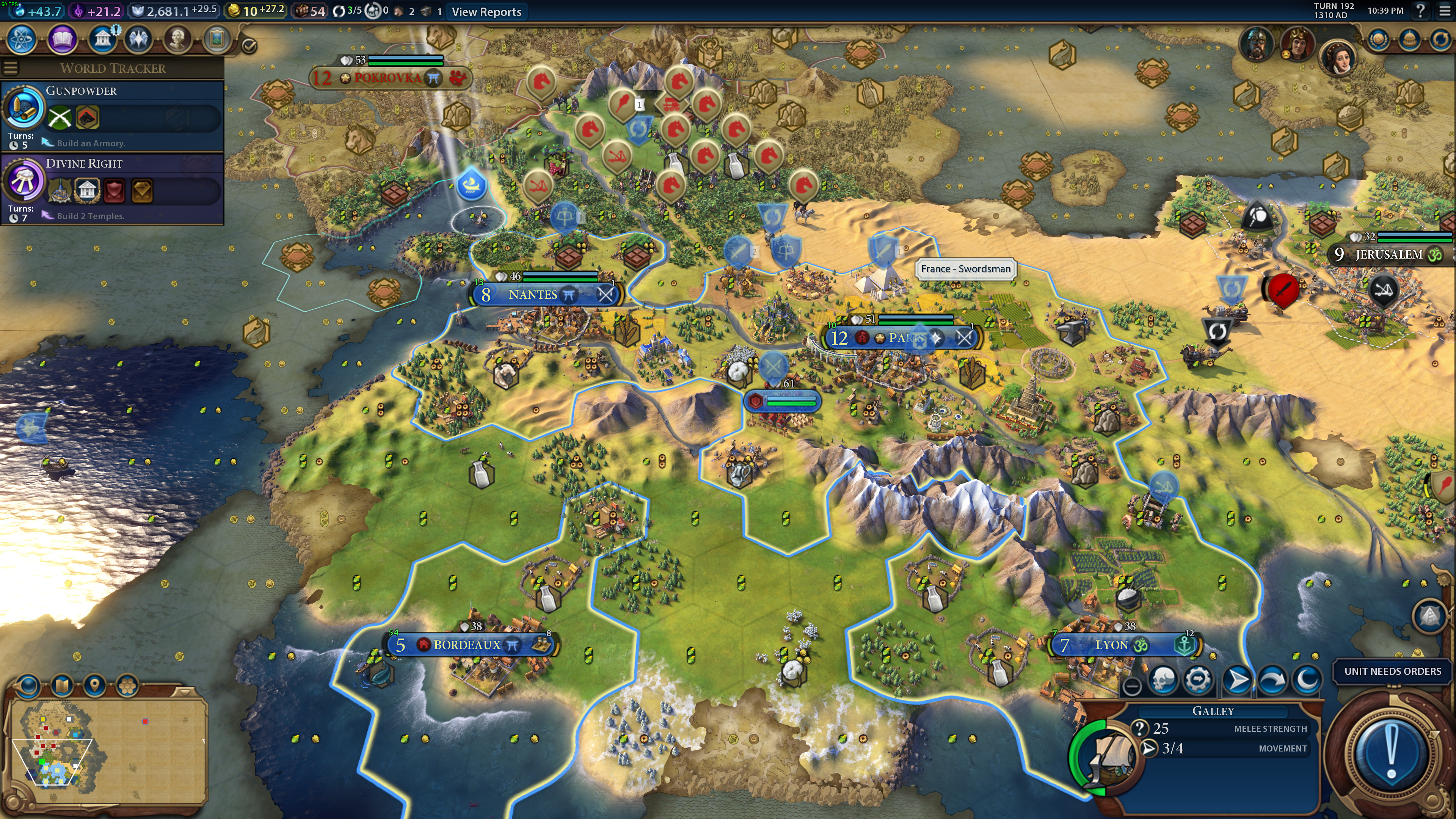
Versus V, Civ VI is far more multifaceted, and as such, each turn is more intense. Now you must agonize over how to use every single tile and how to best make use of the now expire-able builders (replacement of workers), rather than spamming out improvements. It grinds the gears in your head meaning it also further keeps you saying "just one more turn" because you're loath to stop and try and rediscover the same train of thought next time.
The combination of new districts expanding cities over tiles, civics and tech tree - with in-game action linked bonuses - far more involving city state relations, further spying and diplomatic choices, and a fluid government policy management instead of just unlocking the next-next-next item, gives it far greater depth and avoids the common complaint of V that it was decided in the first 100 turns.
In addition to common city center buildings, districts are clever because it requires each city make a specialization choice, as the surrounding tiles themselves are now a resource to be managed. You'll find yourself weighing up whether to lose the factory or farm in favor of a new district. Each district allows a respective type of buildings to be built within, so you can mix and match freely as you did before. This compartmentalization means you must draw quite early decisions on a city’s future and it can certainly be tempting to go for military, money and industrialization, but remember culture, faith and entertainment are also requirements of healthy cities. Your population will revolt if they don't have enough food, places to live or things to keep them happy. For example, where you lack local luxury tiles you'll need entertainment to fill the gap.
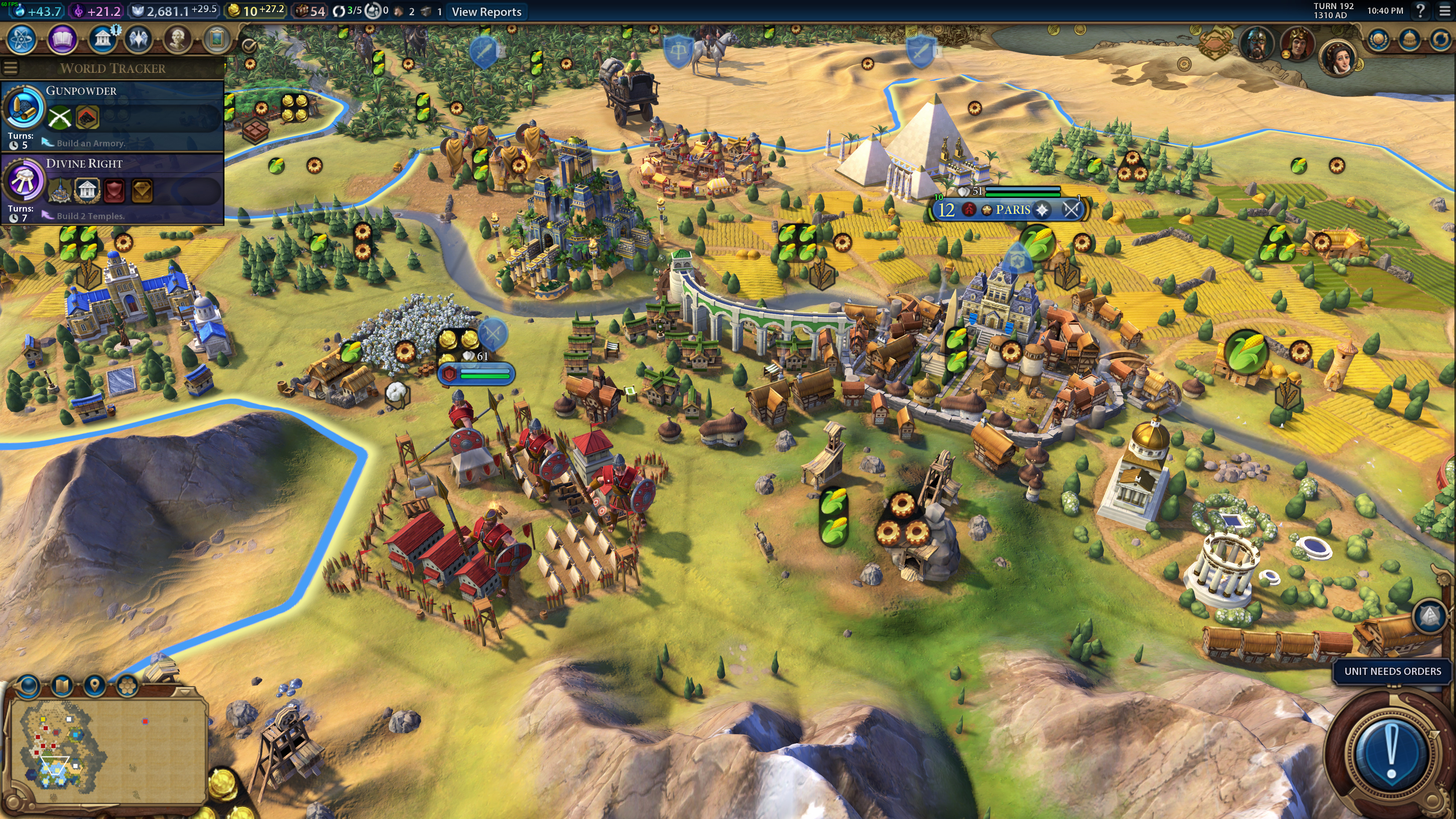
No longer can you just set the build queue and come back to that city 50 turns later because there is no build queue. It's purposeful removal is not only bold, because it'll no doubt annoy the seasoned players as the shift to hexes did, but the more you play the more you realize it's necessary. It forces you to reconsider your management practice, where Civ V was heavily on the macro, Civ VI pushes you to blend the micro-management of each city; each feature, along with keeping an eye on the global machinations.
AI is your key counterpart as, unless you've got friends with several-hour chunks to spare, this is predominantly a single player experience. I'm still undecided on its effectiveness, but when my northern neighbor, Scythia, decided to sit 30 units just off my border I accordingly countered with a line of equal force. In light of this they instead decided to turn tail and run north, wiping out our local neighborhood of city-states instead. I think Fraxis has still some balancing work to do here, as there appears to be no penalty for the AI teams to go on a rampage. Later Scythia took its entire army overseas so I sent a small army of 10 units to aquire half its nation before it could return. Not that clever, evidently. However, according my warmongering is now 'high' and everyone hates me, permanently, even though I liberated my city-state friends in the process.
What's particularly annoying is there's (still) no general boarder control, so missionaries and apostles will continually leak into your territory, despite things like a deep puiblic hatred of their home country. "Our governments have denounced each other but, sure, come right in and we'll adopt your religion" doesn't make much sense.
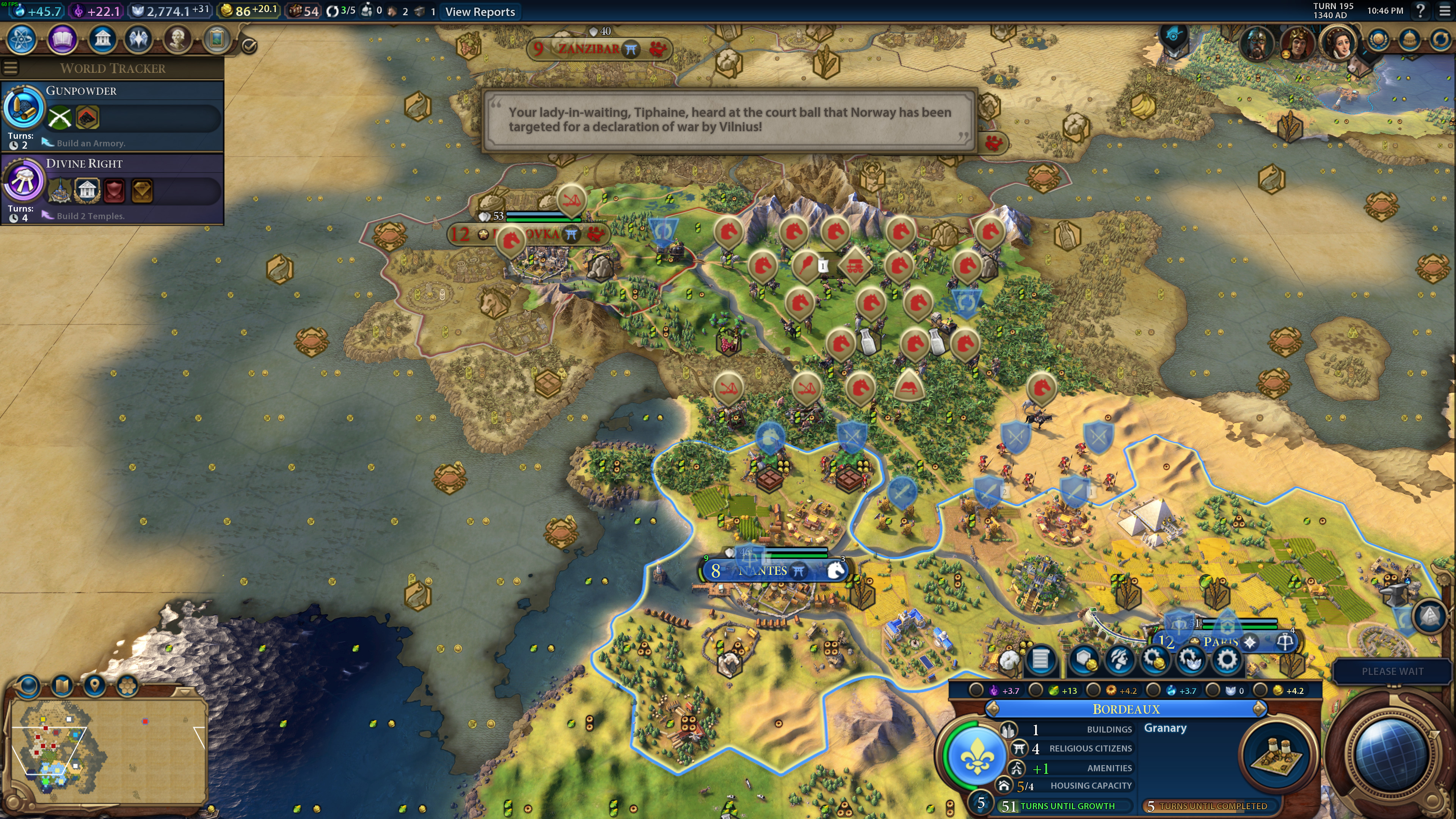
Surprise! Your traders are a great way to reveal the map.
Whereas previously you might have churned out World Wonders to get all the bonuses and points hauls, they now take up tile, making them another opportunity cost decision. You still should make them when possible, but it means they can no longer be limited to just your highest production city as you'll quickly run out of space.
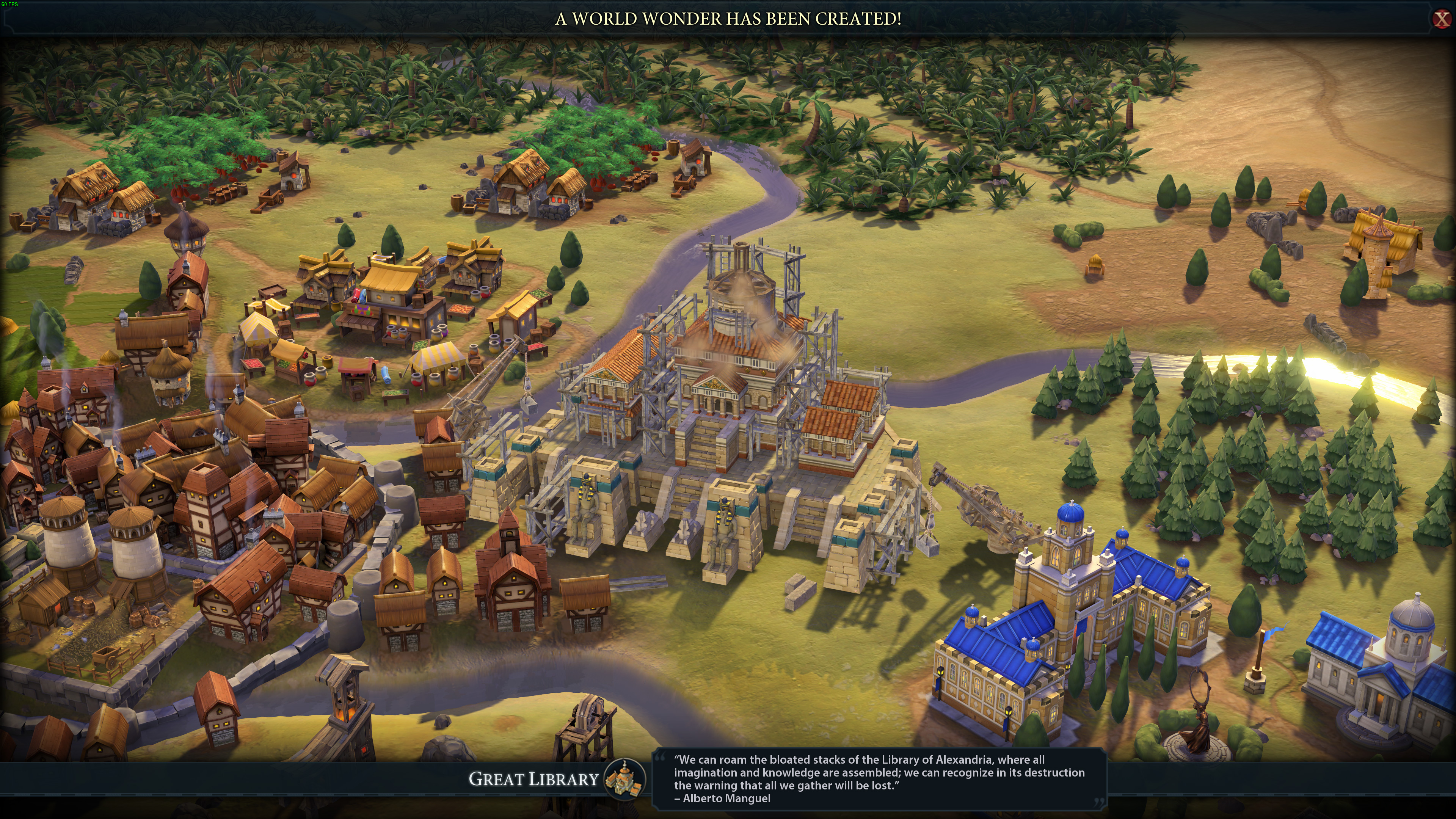
Suck it, Rhodes, my Colossus has already stood longer than the 54 years in your harbor! (OK, I admit it's not entirely fair since the game doesn't have earthquakes and natural disasters though)
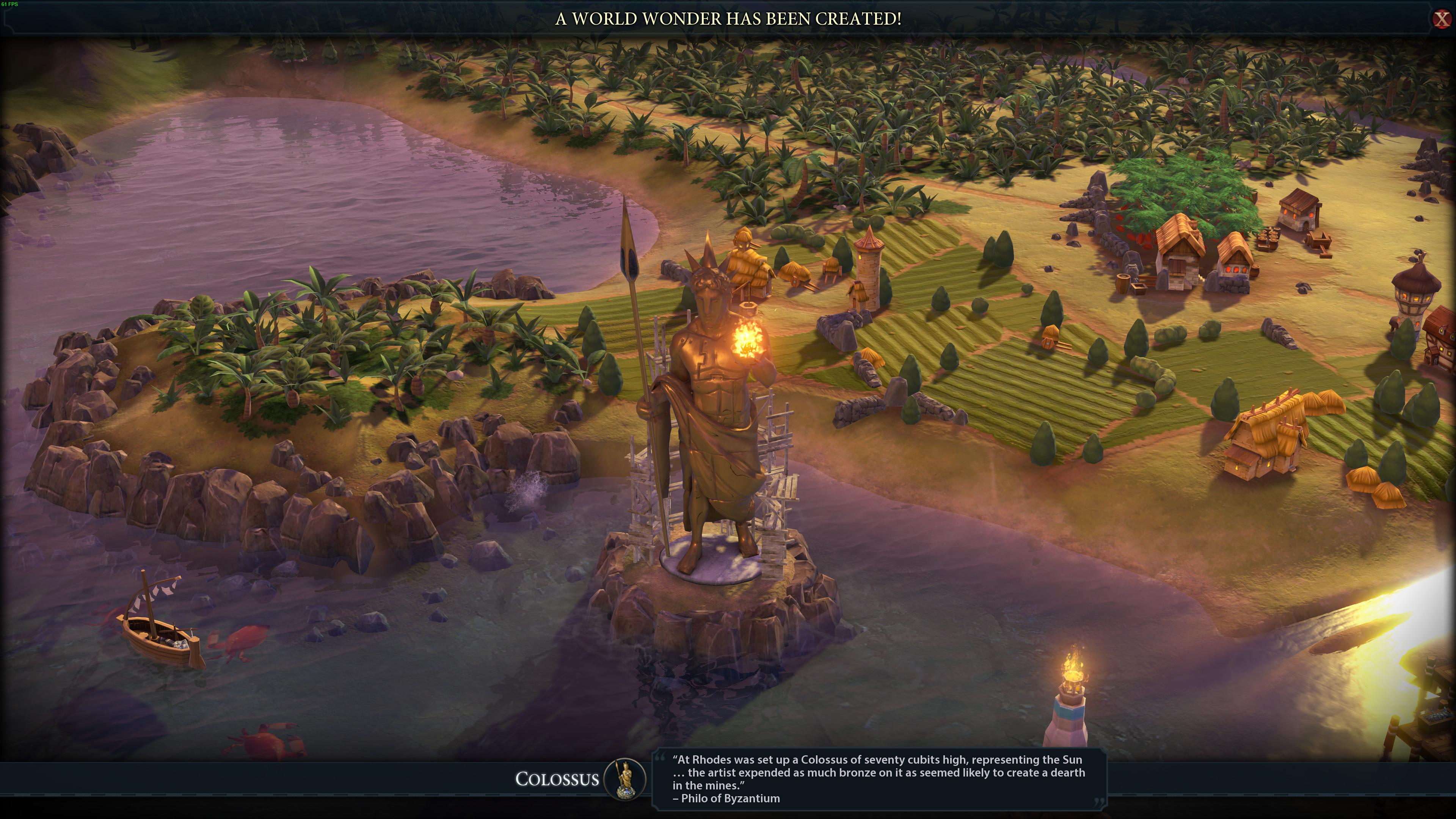
Great People generation has also been overhauled, where you can recruit or pass, if your resources/strategy doesn't allow/want it. The biographies are new and a nice touch.
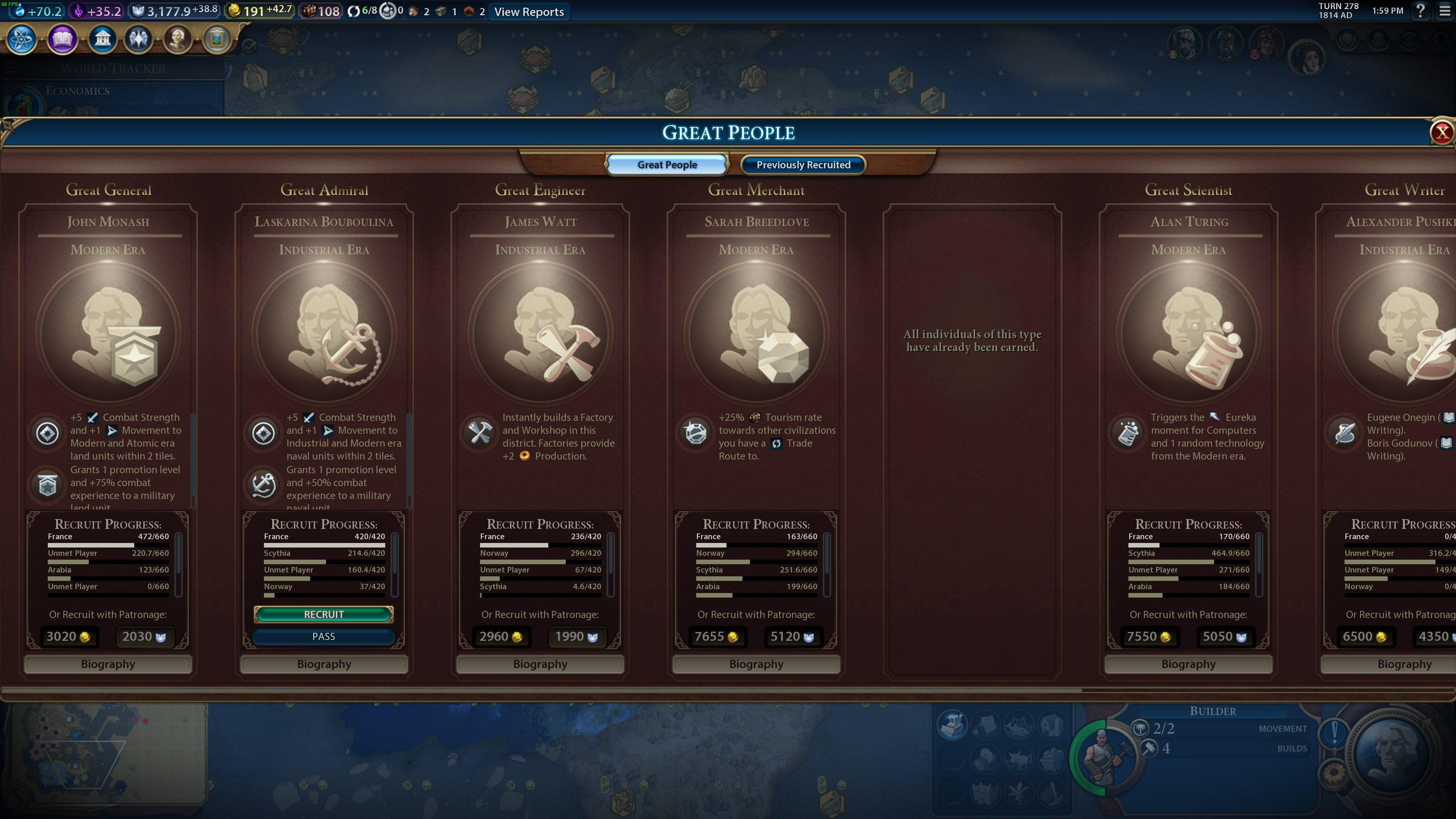
In homage to the original Civilzation in 1991, which included a bug that made peace-loving Ghandi a trigger happy nuclear nutcase, Civ VI also includes the trait, meaning you'll have to be careful of him in the late game stages. So far our relationship is thankfully neutral.
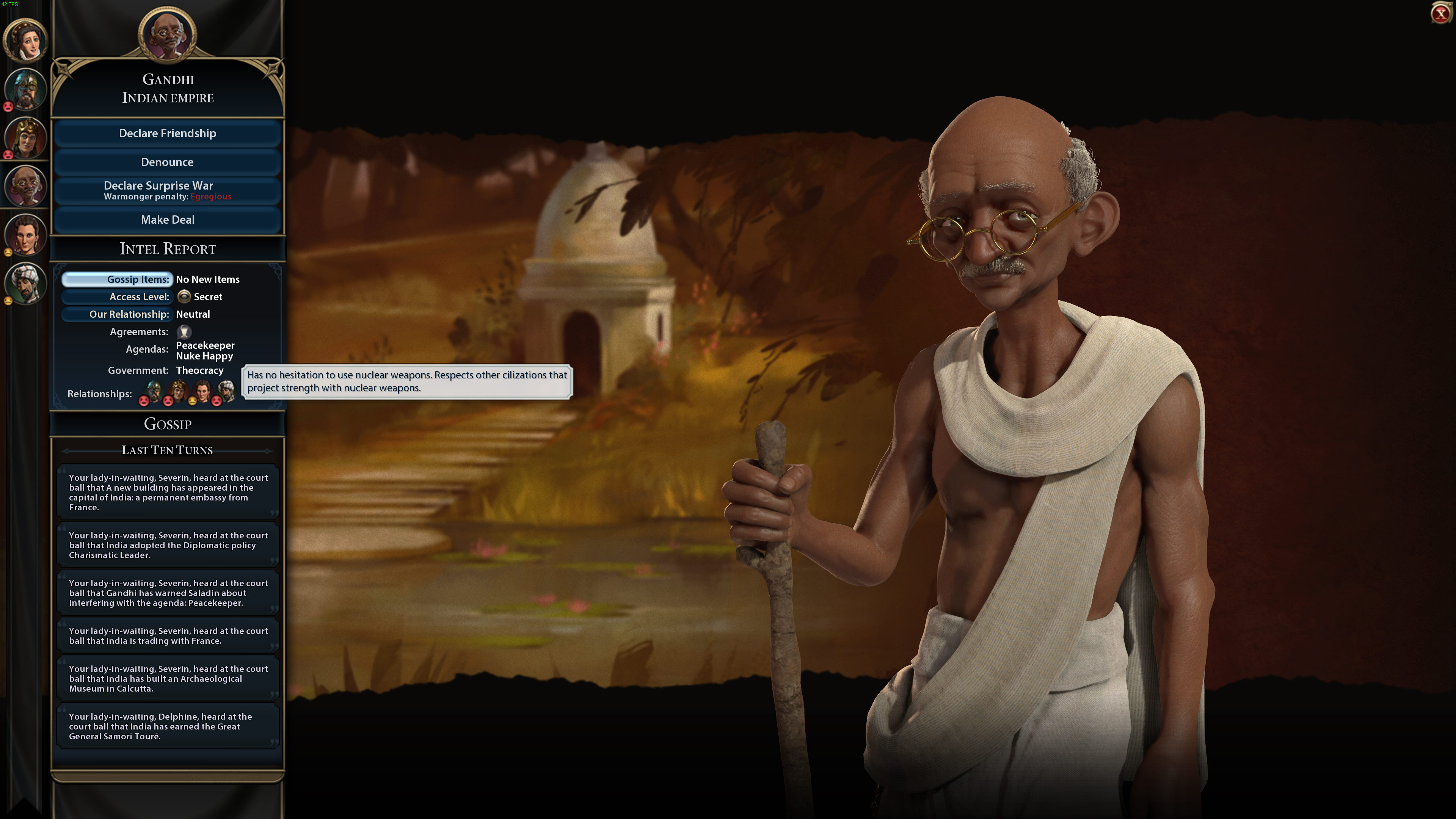
Performance and optimization is 'OK'. My rig is pretty high-end: I'm playing on a GeForce GTX 1070 at Ultra-HD 4K resolution at Ultra settings, which gives a solid 40-60FPS, which is certainly adequate for a strategy game, and the vibrant colors and art-style looks awesome on my professional PA328. But, even though I'm running the game from a super-fast Samsung SM951 NVMe M.2 drive and an 8-core i7-5960X on an ROG Rampage V Extreme load and turn times are still a chore to wait for. Like Civ V, no number of upgrades have incrementally increased turn speeds. For a 25 year PC-centric title, Fraxis needs to work on optimization and undoing some of the wait.
